In Bali today we can still find the overwhelming variety of traditional arts, from sculpture to painting, from architecture to music, from singing to dancing, and more important is that we can still find those mentioned arts that pervaded and supported by, what the Balinese call, taksu the divine soul of the arts. Painting as known in the West is not a very old art in Bali.
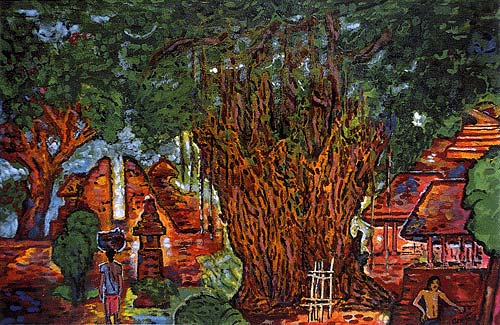
In the old time the Balinese doing more wood or stone carving than painting. They carved temple gates and walls made of soft stone, temple shrines and buildings made of wood, and sculpted overwhelming forms of statues. Wayang or shadow play tradition is also an important source of the modern painting. For wayang characters the artists drew sketches on leather materials before cutting them. Other factor that have an influence to Balinese painting is the creation of religious offerings, when the Balinese constructed delicate art works from bamboo, woods, leaves, rice, flowers and fruits, one form of arts that more or less comparable to installation art today.
An art form that even closer to modern paintings is the black and white picture drawn on white cloth to break the spell of evil spirits and other purposes called rerajahan in the temple and many magical dance-dramas. Same case is the colorful and golden figures on ceremonial flags, banners and umbrellas, etc.
All those arts had contributed to the gaudy and colorful rituals so common in Bali, and in turn also to the development of fine art.
In Klungkung Area
Kamasan is the name of a village in the Klungkung regency in southeastern Bali. This name has long been associated with one of the unique and classical painting traditions of old Bali. Painting tradition in Kamasan had flourished for more than three centuries. When the great Gelgel kingdom in central Bali moved it’s puri or palace to Klungkung in sixteenth century, the artists of the village had been ordered to ornate puris and temples with paintings. Kamasan artists used colors from nature sources. Black for example, is from charcoal, white from animal bones, other colors came from many leaves or fruits. This natural material for coloring is still used today especially for the more traditional form of Kamasan paintings.
Ubud Vicinity
Meanwhile in Gianyar regency developed art tradition with different styles. They painted wayang style, demons and magical figures taken from old Bali folklore and Hindu legends. Later they used modern technique and material for coloring. This in part, because of suggestions from some expatriate artists who visited and lived around Ubud village at the beginning of the twentieth century. They introduced modern materials, such as canvas, ink, acrylic, water color, etc. More important was the introduction and inspiration given to the Balinese to paint not just mythological themes, but also everyday lives and scenery. These ideas then influenced some Ubud painters to experiment with new styles of painting. It’s resulted to what some people called Ubud style of painting. But we’ll not just find one style of painting in Ubud area. The styles are maybe as many as the number of villages scattered around Ubud. There are Pengosekan styles from Pengosekan Village, which is well known for their paintings of birds and trees. This one of some Pengosekan painting styles became popular for hotels, offices, and homes, not just in Bali and Indonesia, but also abroad.
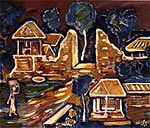
In Penestanan village developed painting style known as Young Artist. This naive and colorful painting encouraged by Arie Smith, a Dutch artist who live in Bali. Young Artist painters utilized unusual color for their objects, such as red for the sea, blue for human skin, yellow for the sky, etc.
There is Batuan style, from the artist village of Batuan, which generally have a darker type of images compared to Ubud paintings. The quality and charm of this Batuan painting style is well recognized. Mural painting in a sport center in Japan is featuring giant painting tens of meters wide, which was painted a few years ago by Batuan artist I Wayan Bendi. Visit home of other painter of Batuan village, I Made Budi, and we’ll see one letter from Ronald Reagan, former US president.
Another painting center with it’s unique style in Ubud vicinity, is banjar Tebesaya of Peliatan village. Here we’ll find great names of Balinese painters, one of them is Ida Bagus Made Poleng, who is known by every Balinese art lovers as a quite tough and eccentric person who never want to sell his paintings to galleries, until his departure.
In Ubud we’ll find as well modern and academic paintings, which is increasing in quantity and quality. To find this type of art, visit art galleries and museums around Ubud. For art lovers, Ubud and the villages around it is a natural as well as surrealist beauty
.
On Palm Leaf
In Bali is also popular the art of painting on palm leaves. This art form featuring wayang as well as other traditional Balinese characters cut with chisel on the palm leaves. This drawing then painted black using locally found natural materials. The result is a book consist of a story with beautiful figures and narration. Bali Aga village (old Bali village which still hold it’s ancient tradition) of Tenganan in Karangasem regency, eastern Bali, is particularly strong in this form of art. There is even a painting on many palm leaves arranged as a single wide canvas, resulting in a painting with size around 50 x 60 square centimeters.
Museums with Balinese painting
Bali is not just an ideal place for fine art hunting. It’s also a paradise for art lovers who just want to watch and admire. There are some fine art museums in Bali which are among the finest in Indonesia. For Kamasan Style, visit Nyoman Gunarsa Museum of Classical Balinese Painting in Banjar Angkan, Banda village, Klungkung. In Mas village near Peliatan there is Rudana Museum of traditional Balinese naive and modern paintings. The collections are overwhelming and many of them are in excellent quality.
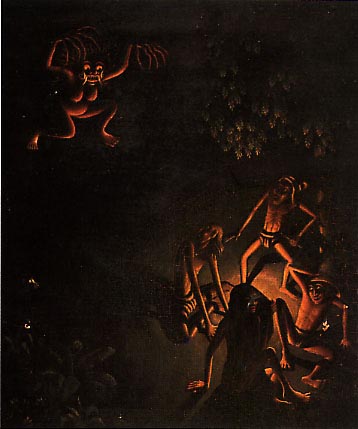
In Pengosekan village near Peliatan and Ubud, visit a grand and beautiful Agung Rai Museum of Art (ARMA) which featuring classical Balinese paintings as well as Christie’s record breaking quality level paintings such as from Raden Saleh and Walter Spies. There is also Ratna Wartha, the first fine art museum in Ubud. Established in 1953 to promote the idea of Pita Maha artist association which was established in 1932, this museum exhibits some of Bali’s classical paintings and carving. Meanwhile Neka museum, is one of the most complete Balinese art museum in term of the number and variety of collections. It’s collections including modern paintings, classical as well as paintings of expatriate artists of the thirties. It is Located 1 kilometer west of holy Campuan river of Ubud.
The Artists
-
- I Gusti Nyoman Lempad. Born: Bedulu village 1865 Lempad is a legendary painter, wood carver and architect of Bali. He build cremation towers and temples. On painting, his early work is color paintings, later developed to black and white. He was already married when the Krakatau erupted in 1883. So on his departure on April 25, 1978, he is in his 113. He departed in the same month as his old friend Rudolf Bonnet and in the same year as Cokorda Gde Agung Sukawati. The all three are the founders of the artists association that hold an important part on the history of artists development in Bali, the Pita Maha in 1932.To see his painting, visit his house in Ubud, around 100 meters east of the market, also in Puri Lukisan Museum, Neka Museum Ubud, Art Center Denpasar, Tropen Museum Amsterdam, Rijkmuseum voor Volkenkunde Leiden, Museum fur Volkenkunda, Basel Germany.
- W.O.J. Nieuwenkamp. Born: Holland 1874 Came to Bali in 1904, became the first western artist who visit the island of Bali. He made some drawings and learned the Balinese way of life before went back to Holland because of his ill. In 1906 he came back to Bali until 1907, in which he became a witness of the Puputan Badung war and massacre in 1906. He produced the first comprehensive book about Bali. He departed in 1950.
- Roland Strasser. Born: Vienna, Austria 1895 He left for Indonesia in 1920. After traveling to some other countries including Mongolia and Tibet, he returned to Bali in around 1934. He lived in cold mountainous area of Kintamani for around ten years, and left Bali because of war in 1944. He died in the United States in 1974. His painting can be found in ARMA, Ubud.
- Walter Spies. Born: Moscow, Russia 1895 A son of German diplomat in Moscow, he was already well known in Europe as a painter in 1923. First visiting Bali from Java in 1925, he made permanent move in the middle of 1927. He is a multi talented artist, as a painter he had created many great pictures of Bali, as a musician he was the first to recognize Balinese music and to record them. In the thirties he gave the Balinese an inspiration to create – based on the older tradition – the new dance form called Kecak. Together with Rudolf Bonnet, I Gusti Nyoman Lempad and Cokorda Gde Agung Sukawati established artists community Pita Maha, in 1932. Walter Spies facing a tragic death in 1942 when with other German civilian internees in World War II sailing from Padang in Sumatra island to Sri Lanka, the ship was bombed by a Japanese war plane and sank near Nias island. He is amongst them who were missing.We can see his painting reproductions at ARMA, Neka Museum Ubud
– Systolic Blood Pressure, SBP What is sildenafil citrate? Appropriate therapy in the presence of a documented.
. His original paintings can be found at Stadtisches Museum, Dresden (before Bali period), and many private collectors.

-
- Rudolf Bonnet. Born: Amsterdam, Holland 1895 He lived in Italy and North Africa before he came to Bali in 1929. Together with Walter Spies, I Gusti Nyoman Lempad and Cokorda Gde Agung Sukawati established artists community Pita Maha, in 1932. In 1953 he designed the building and garden of Puri Lukisan Museum in Ubud. He died in Holland in 1978. Before he died he made a request to send his ashes to Bali. In 1979 his ashes were cremated in Bali, together with the cremation of his old friend Cokorda Gde Agung Sukawati, and then ceremoniously thrown into the sea. His paintings displayed at Agung Rai Museum of Art (ARMA) and Neka Museum Ubud.
- Adrien Jean Le Mayeur de Merpres. Born: Brussels, Belgium 1880 Arrived un Bali in 1932. Lived in Sanur in South Bali, he married Balinese legong dancer Ni Polok, who then became his prominent model. He died in Brussels in 1958. His paintings can be found in his museum on the left (if we are facing the sea) of Grand Bali Beach hotel in Sanur, also at ARMA Ubud.
- Louise Garrett Koke. Born: USA 1897 Arrived in Bali in 1936 as a young lady with her future husband Robert Koke. Currently she is well known more because of her and her husbands activity to build the first hotel in Kuta Beach, and latter published a book on the account titled ‘Our Hotel In Bali’. They had visited China and Japan and planned to continue their journey to India and Europe after a ‘two restful months’ in Bali. What happened was that they were in Bali for five years, and they only left the island because of the Japanese sweeping through southeast Asia in the World War II. Louise died in 1993 in the US, her ashes thrown to Kuta waters by her husband Robert as her previous wish. Her drawings can be seen at Neka Museum Ubud.
- W.G. Hofker. Born: Amsterdam, Holland 1902 He was in Bali from 1938 to 1944. Most of Hofker works done on this period. His paintings are very refined and smooth, also very poetic. He painted villages, temples and religious life of the island, and especially has focus on the people of Bali. He died in 1981. His paintings displayed at ARMA and Neka Museum Ubud.
- Miguel Covarrubias. Born: Mexico City 1904 He came to Bali in 1930. In 1937 his book ‘Island of Bali’ published for the first time and become classic. He also made sketches and paintings about Bali, some of them is for the illustrations of his book. He died in 1957 after for several years he was Professor of Art History in the National School of Anthropology in Mexico. His paintings displayed at Neka Museum Ubud.
- Theo Meier. Born: Basel, Switzerland 1908 Arrived in 1936, he lived in Bali for 20 years. Lived in Thailand with his Thai wife from 1961. He died in Switzerland in 1982. His paintings displayed at ARMA and Neka Museum Ubud.
- Ida Bagus Made. Born: Tebesaya, Ubud 1915 Known as Ida Bagus Made Poleng. He was taught by his father, also an artist (1897 – 1952) who receive a Silver Medal on 1937 World Exhibition in Paris. But he regarded himself as a disciple of Rudolf Bonnet. In 1947 a painting of his was purchased for the Museum of Modern art in New York. He is very cautious when someone want to buy his paintings. He have to make sure that the painting is not to be bought by a gallery, since he is opposed to the idea of ‘art business’. He died in Ubud in 1999. To see his painting, visit ARMA, Puri Lukisan and Neka Museum Ubud.
- Donald Friend. Born: Sydney, Australia 1915 He is in Bali from 1966 to 1980. His painting displayed at ARMA and Neka Museum Ubud.
- Arie Smith. Born: Zaandam, Holland 1916 Living in Bali from 1956 until today (2000). He formed artists community in Pengosekan village near Ubud known as ‘Young Artist’. His paintings have simple or naive forms. This style probably influenced the Young Artist members. Their paintings are often naive but strong in colors. They used unusual color for the objects, such as red for the sea, blue for the skin, yellow for the sky, etc. His works displayed at ARMA, Neka Museum in Ubud and Penang Museum, Malaysia.
- Anak Agung Gede Sobrat. Born: Ubud 1909 His great skill in drawing attracted the attention of Walter Spies and Rudolf Bonnet who request him to modernize his work while preserving the tradition. He is regarded as one of the first artists to develop modern Balinese paintings. He taught at the ASRI (Academy of Fine Arts) in Yogyakarta in Java from 1957 to 1959. His works featured in Sono Budaya Yogyakarta, also in Puri Lukisan Museum, Neka Museum Ubud, Tropen Museum Amsterdam, Rijkmuseum voor Volkenkunde Leiden.
- I Gusti Ketut Kobot. Born: Pengosekan 1917 He is a member of Pita Maha and the Ubud Painters Group. His works displayed at ARMA and Neka Museum Ubud.

-
- Han Snel. Born: Scheveningen, Holland 1925 In Bali since 1950 until his departure in Ubud in 1998. Married a Balinese wife. His work sometimes graphical such as featuring lots of rounds or half circles in the paintings. His paintings displayed at his gallery on Jalan Kajeng and Neka Museum, Ubud.
- Kay It Tanaya. Born: Tabanan, Bali 1938 Started painting as autodidact in 1958. He is influenced by arts surrounding his birth place, including balinese carvings, statues, etc. Later he developed terra-cotta figures, batik style paintings as well as other style of paintings. He held exhibition in Surabaya, Jakarta, Melbourne and Canberra. He departed in Bali in 1977. His work can be found at Art Center Denpasar, ARMA and Neka and Puri Lukisan Museum Ubud.
- Anton H. Born: Bandung, Java 1935 Moved to Bali after 1969. His paintings sometimes look like mosaic and featuring Balinese arts. He departed in 1984 in Bandung, and his ashes thrown to the sea of Sanur. Visit Neka Museum in Ubud to see his paintings.
- I Dewa Nyoman Batuan. Born: Pengosekan 1942 He often paint religious or magical aspect of Bali and Hindu Dharma. With other young artists he founded the Pengosekan Community of Artists in 1970. His exhibitions solo or in group held in Bali, Sydney Australia, Germany and Denmark. His works can be found in his gallery in Pengosekan village near Ubud, ARMA and Neka Museum Ubud.
- Nyoman Gunarsa. Born: Klungkung 1944 He is one of some leading Indonesian painters. Has 2 museums himself, one in Yogyakarta, Museum Seni Lukis Kontemporer Indonesia for contemporary art and one in his village, Banda in Klungkung, Museum Seni Lukis Klasik Bali for classical art. Gunarsa’s paintings are based on Balinese folklore, Hindu Dharma legend and arts. But his painting styles are uniquely his. He has exhibited in Bali, Jakarta, Europe and some other countries. His works can be found in his museums, at ARMA and Neka Museum Ubud.
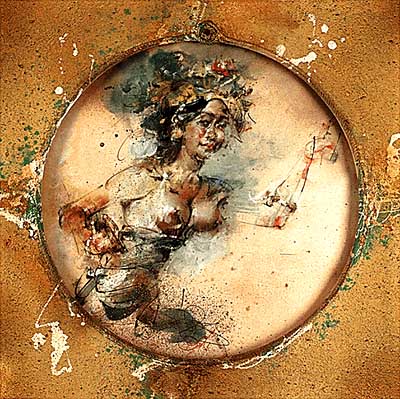
- Antonio Maria Blanco. Born: Manila, Philippines 1926 He has a Catalan (of Spain) ancestry. Came to Bali in 1952. Lived in Bali with his Balinese wife Ni Ronji, a legong dancer who also became his model for some of his paintings. He love to paint women in their exotic postures. Blanco build a permanent studio and exhibition rooms above Campuan river where he displays his works and lived with his wife and four children. He died and cremated in Bali at the end of 1999. His painting can be found at his own studio, ARMA and Neka Museum, Ubud.
- Made Wianta. Born: Apuan, Tabanan 1949 He is also a Balinese dancer and musician. Formally studied art at SSRI ( School of Fine Arts) in Denpasar and at ASRI (Academy of Fine Arts) in Yogyakarta in Java. But he is a freedom soul who learn from his own intuition and will. He lived and worked from 1975 to 1977 in Brussels. His painting is decorative, toward abstract yet very detailed and exquisite. He had exhibitions in Bali, other parts of Indonesia, Asia, Europe and the United States. His works displayed at ARMA, Neka Museum Ubud and other places.
- Nyoman Meja. Born: Ubud 1952 He participated in group exhibition in Holland in 1975. He also exhibited in other area of Indonesia. His works displayed at ARMA Ubud.

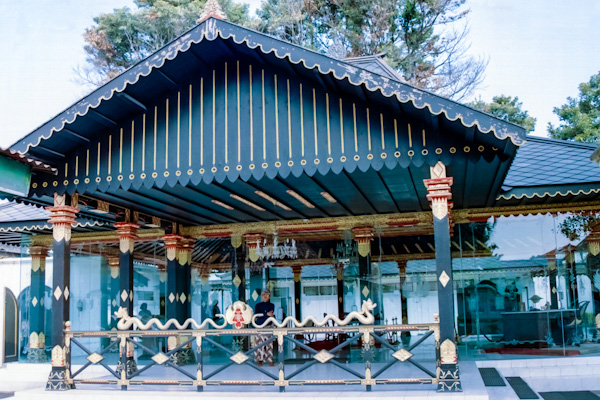
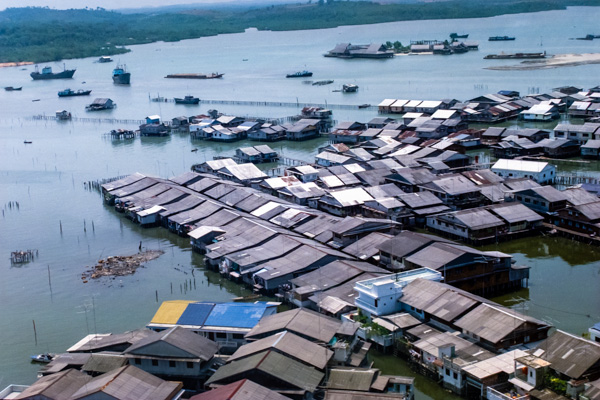

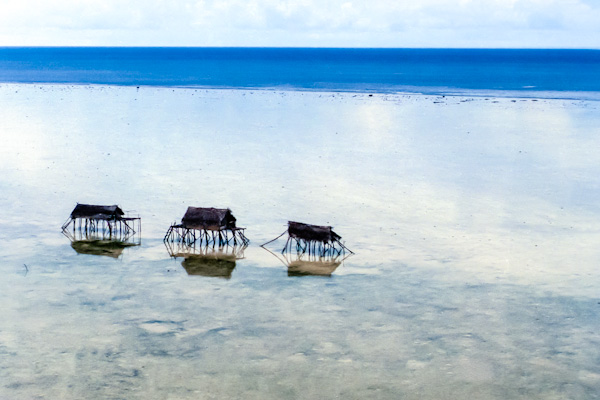

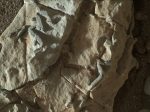



This Post Has 2 Comments
Hi,
I’m sorry, this is out of my area of expertise 🙂
I found a balinese painting on canvas. Looks old. How can i tell if it is authentic? The medium is hard to identify. Lots of colors.